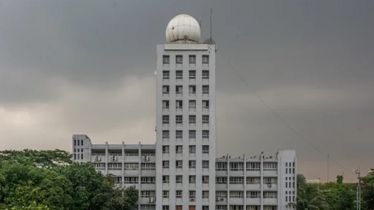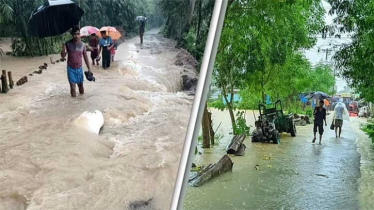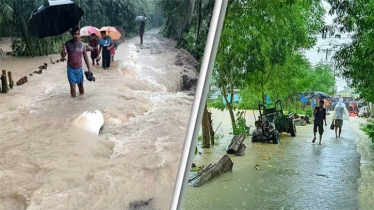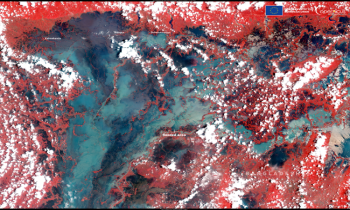
Ethiopia — In his late 60s, Abdi Ahmed gears up the strength for a new day as a nomad moving around with his cattle and 19 children. The pastoralist life, where he wanders eastern Ethiopia looking for water and grazing grounds for his livestock, is his only source of income to support the family.
“Animal rearing is all I know,” Ahmed says. “I’m happy with it since it’s the way my father raised me. And it’s the only skill and knowledge I have for a living.”
Over the years, Ahmed’s way of life has changed drastically as frequent droughts have taken a heavy toll on pastoralists in the Somali region of southeastern Ethiopia. Some have been forced to seek new jobs or side hustles as water or pasture become scarce. “In 2021, we faced one of the worst droughts. For 14 months, it didn’t rain at all,” Ahmed tells Mongabay. Many of his livestock died; from more than 100 head of cattle, Ahmed now has just 12.
As dry weather conditions intensify, studies suggest that mixing traditional knowledge with innovative strategies can help pastoralists adapt to droughts and floods in the region. Since time immemorial, pastoralists have depended on Indigenous strategies including mating calendars, herd mobility and diversification, traditional rotational grazing systems, and weather forecasting to prepare for drought conditions.
However, traditional techniques alone are no longer as effective as before in the face of frequent unpredictable dry spells and population pressures on pasture.
Cattle and goats are one of the foundations of life out here in Ethiopia’s Somali region.
“We got everything from them: milk, meat, and cash whenever we needed,” Ahmed says. “But everything is falling apart now.”
Some pastoralists have had to send their children to work with families who still have livestock. In return, the families give them cattle to start over and some even pay for their children’s work as herders. It’s a sad shift, pastoralist parents say.
Ahmed Kilas, 60, from Lebeshak village, shares a similar plight. The village lies in arid shrubland, with only a few drought-resistant shrubs dotting the dry, flat terrain. Traditional huts, made from local materials like tree branches, are scattered across the area.
Seated near his hut, Kilas reflects on the time when abundant rains nourished the land and provided ample sustenance for people and livestock. But today, he gazes with sadness at the transformed landscape, acutely aware of the profound changes that have come with the scarcity of resources. Over the prolonged dry years, he lost all but two of his cattle.
“They could no longer walk, so we tried to transport them by trucks to new locations where we had heard there might be water,” Kilas says. “But it was a desperate and terrifying experience. We traveled hundreds of kilometers hoping to find water, but we found nothing — just more parched land and empty wells.”
Traditionally, in times of prolonged droughts, Somali’s pastoralist communities used traditional adaptation strategies passed down by their ancestors to cope.
For example, in Guyo Kebele village, Ahmed still uses individual water-storing holes called birka, made from stone and concrete. During the rainy season, he fills the birka with water to use during the dry season. The community uses the stored water as a last resort after exhausting other water sources.
“Even when our birka is full, we often travel long distances to find water, knowing that the drought is likely to worsen, and we try to conserve our stored water for the most severe times,” Ahmed says.
The community also follows a traditional breeding calendar for their cattle that aligns with water availability and seasonal changes. By carefully predicting rainfall season and timing, they plan the cattle’s mating and ensure the offspring are born when enough water is available. Ahmed says they separate male and female cattle to avoid birthing during the dry period.
“If we let them mate before the dry season, we risk losing both the newborn calves and their mothers,” he says.
In the Somali tradition, pastoralists combine this with seri grazing methods. Seri means rotating the grazing areas to prevent overgrazing and allow the land to recover. By moving the livestock around different pastures, they ensure they don’t overuse any particular area, which helps the grasses and shrubs recover and stay healthy for future grazing.
But the increased frequency of droughts and population pressures on pasture lands are exhausting these traditional techniques. They’re no longer as effective as before. The birkas are emptying, there’s a lack of healthy cattle to revive the population, and there isn’t enough pastureland to rotate through.
A study published in mid-2024 suggests innovative strategies combined with these traditional techniques can offer pastoralists a lifeline. Co-author Desalegn Yayeh Ayal, head of the Center for Food Security Studies (CFSS) at Addis Ababa University, emphasizes the need for new water-harvesting techniques.
“Having water-related interventions and techniques could be promising not only for communities in the Somali region but beyond to fight possible threats from climate change,” he says.
Because droughts are becoming increasingly frequent, flash floods have also worsened as the severely dried lands can no longer hold and absorb the infrequent rainwater like they used to. For pastoral and agropastoral communities in the lowlands of Ethiopia’s Afar, Somali, Oromia and South Ethiopia regions, German development agency GIZ is working with local partners to come up with water-spreading weirs (WSWs). These structures, made of natural stone and concrete, are used to dam the flow of floodwater runoff.
A communal water hole near Kebribeyah supports over 200 herders and their cattle. As drought worsens and these vital sources dry up, securing water for their animals becomes a growing challenge. Image by Solomon Yimer.
“The structures slow down the flow velocity of the floods and allow the water to infiltrate into the soils to recharge groundwater levels,” says Mike Bartels, team lead manager at GIZ’s Capacity Development for Strengthening Drought Resilience project, or CDSDR III.
Kilas, the herder from Lebeshak village, says elders used techniques to accurately predict weather and guide their actions in the past. They observed changes in the sky, watched the behavior of birds, insects and other animals, and studied the flowering patterns of some plant species. However, with weather patterns becoming unpredictable due to climate change, Kilas says he can no longer rely entirely on traditional strategies for accurate weather predictions.
Sintayehu Alemayehu, a scientist and research team leader at Alliance Bioversity International–CIAT, tells Mongabay these traditional methods can be integrated to design and implement technological innovations like platforms that monitor water levels in regions where pastoralists might migrate to in search of water, known as waterpoints.
He cites the case of the Borena zone, and arid region in the south, where “we have collected Indigenous knowledge of pastoralists to gather information on rangeland restoration, water and livestock resource management, customary institutions, and forecasting systems that locals have long relied on.”
Communities often struggle with lack of access to timely and comprehensive data, but the waterpoint monitoring platform gives them real-time information that shows water levels at each waterpoint and the condition of different waterpoints spread across the targeted regions.
“To have community people and key stakeholders participate in the process, we have developed a group i.e. pastoral community of practice that includes community leaders, researchers, water managers, and range line managers for information sharing and improved collaboration,” Alemayehu says. He adds he hopes this information on water and pasture availability will help communities prepare and adapt to climate hazards, especially the dry weather conditions.
“We aim to upscale this platform at a national level collaborating with the government in early 2025,” he says.
Amid the ongoing drought, pastoralists in the Somali region of Ethiopia are forced to downsize to smaller, home-based herds and adopt agropastoralism, integrating farming with grazing to cope with the harsh conditions. Image by Solomon Yimer.
Besides these adaptive measures, pastoralists are increasingly shifting to agropastoralism, growing maize and khat (Catha edulis) while also continuing to herd their livestock. “It’s not an ideal option, but growing crops helps us get food for sustenance,” Kilas says. “However, crop farming doesn’t fully replace the need for grazing land, so we’ve had to limit the number of livestock we keep and adapt to this new way of life.”
In the meantime, as the regional government provides some support to build more water holes, locals are waiting to access better water storage systems and innovative weather forecasting tools. “These kinds of innovations could make a big difference in how we manage our resources and better adapt,” Kilas says.
Bartels, the development worker, says he’s also upbeat. “Although many of the strategies in use have not been implemented outside Ethiopia, there is a huge potential to upscale the approach in many other dry valleys within Ethiopia and adjacent countries like Djibouti, Somalia, Kenya, Sudan and in the Sahel,” he says.





